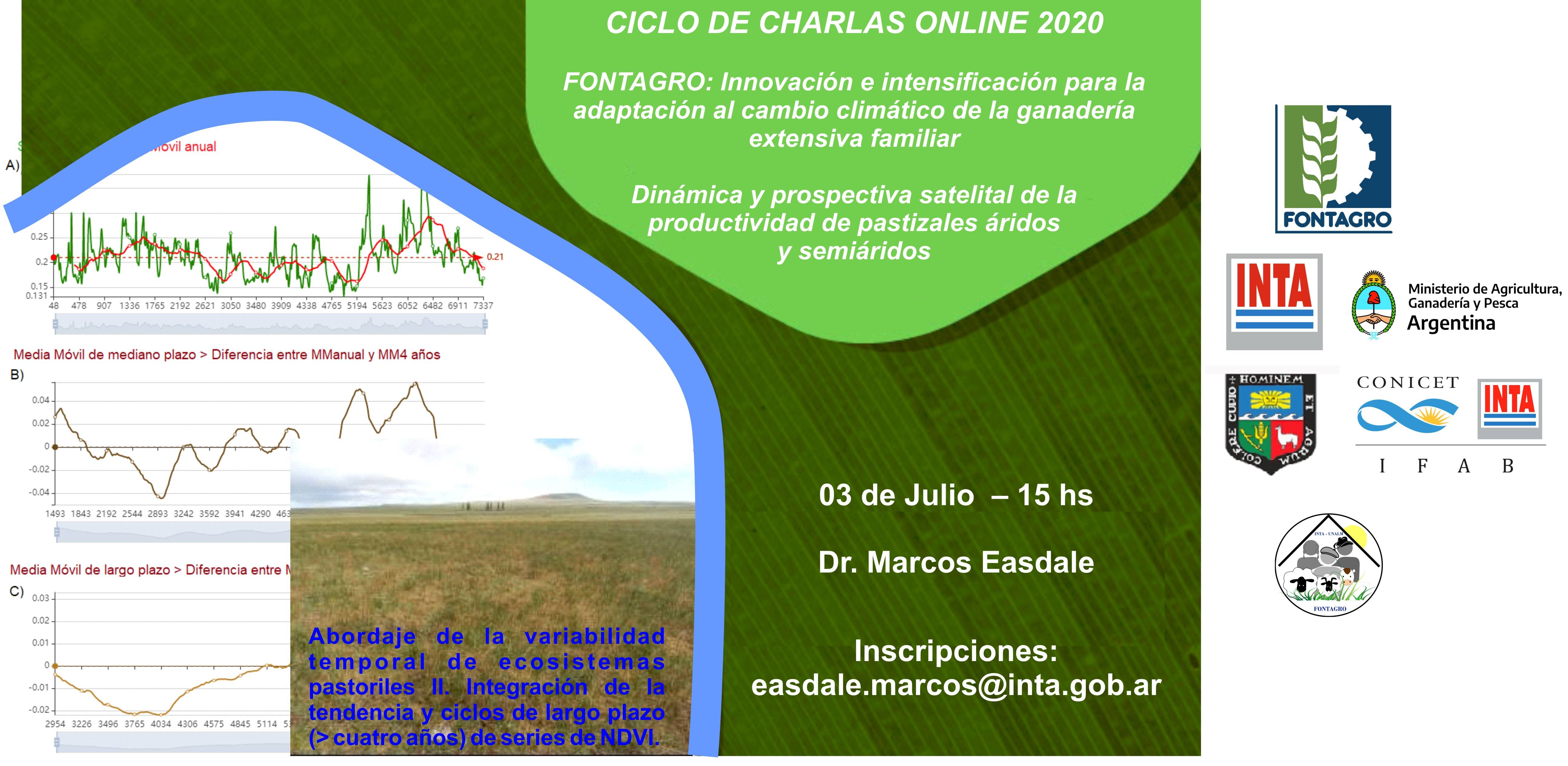Within the framework of the Project: Innovating and intensifying livestock farming to adapt and grow: Increasing the adaptive capacity and resilience of soils. Marcos Easdale gave us his third talk

Climate change confronts extensive livestock farming with adverse situations, such as changes in vegetation cover, which reduce the availability of forage for livestock. Among the technological innovations for adapting to climate change proposed by the FONTAGRO Project "Adaptation to climate change in extensive family livestock farming" are forage evaluation and adjustment of stocking rates. We understand that the stocking rate is linked to pasture productivity, so understanding its dynamics and having a prospective of its behavior will allow us to improve its use and conservation.
In this context, we invited Dr. Marcos Easdale to give a series of 5 talks entitled: Dynamics and satellite prospective of the productivity of arid and semi-arid rangelands.
Satellite dynamics and prospective of the productivity of arid and semiarid grasslands. Cyclic Trend and Rate of Change of NDVI.
Dr. Marcos H. Easdale talked about results and applications for Patagonia of a new indicator, developed for land monitoring, degradation and desertification: Cyclic Trend.
The Cyclical Trend is an approach we have developed for time series analysis of productivity, which provides information on long-term movements while including cyclical changes in the underlying direction of the series. We evaluate NDVI trend cycles in Patagonia (Argentina) as a proxy for vegetation productivity dynamics, integrating trend and medium-term cycles (> 4 years). We used MODIS images between the years 2000 and mid-2018. The results show that trend cycles explained a significant portion of the total temporal information (reaching almost 20%), of which most of the patterns were explained by non-monotonic (i.e. cyclic) behavior. Five main patterns in vegetation dynamics were identified: Decline (0.1% of the area), Increase (0.6%), Recovery (48.8%), Relapse (36.8%) and No Trend-Cyclical (13.8%). Contrary to what is generally seen in the literature, linear patterns and particularly declining trends were marginally recorded in the last 18 years of NDVI records in Patagonia. Instead, the largest proportion of the area was classified as initial or advanced recovery and initial relapse patterns, which refer to phases of a cyclical behavior. These results emphasize the need to review the conceptualization of land degradation assessment through the use of satellite information, and in particular, to critically review the ability of linear trends to reflect vegetation dynamics. Finally, we propose the potential use of the Cyclic Trend as a tool for monitoring and assessing vegetation dynamics in programs aimed at neutralizing land degradation, and for the development of early warning systems.
Finally, as a complement to the cyclic trend, recent advances in the development of a new indicator are presented: The Rate of Change of the Cyclic Trend, which provides information on the direction and speed of the movement in the medium term, obtained from the combination of the first and second derivatives of this function.
The results presented were published in the following article:
Easdale, M.H., Fariña, C., Hara, S., Pérez León, N., Umaña, F., Tittonell, P., Bruzzone, O. (2019). Trend-cycles of vegetation dynamics as a tool for land degradation assessment and monitoring. Ecological Indicators 107, 105545. DOI:1016/j.ecolind.2019.105545




